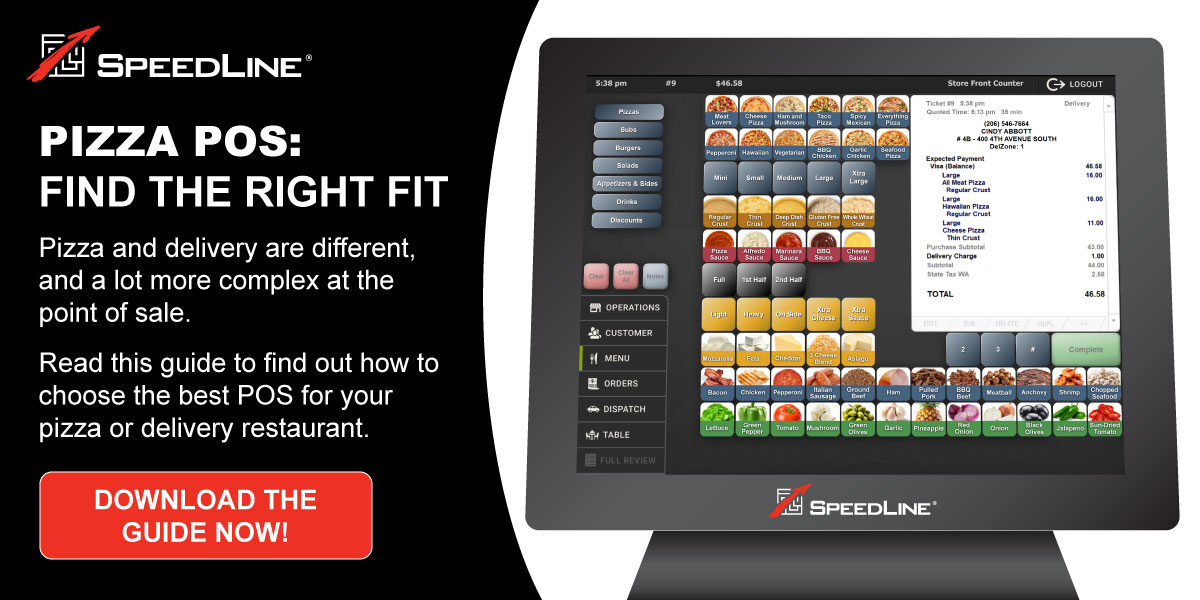Ghost kitchens have become increasingly popular. Although they existed before COVID-19, many smaller restaurants began relying on them to minimize overhead costs when dine-in wasn’t an option. For some many mom-and-pop restaurants, it’s what kept their business afloat. However, what was initially seen as a creative solution for restaurants has evolved into a new hurdle for the industry.
Types of Ghost Kitchens
Before reviewing how they are hurting small restaurants, it’s important to understand that there are different types of ghost kitchens, which can be divided into three distinct categories:
- Pop-up kitchens: part of a restaurant’s existing kitchen framework that focuses on delivery and takeout orders (often under a different alias).
- Shared kitchens: spaces owned and operated by third-party companies rented out to one or more restaurants.
- Pods: mobile kitchen containers (most commonly food trucks).
How Ghost Kitchens are Hurting Mom-and-Pop Restaurants
On the surface, ghost kitchens appear to be a novel concept that addressed a weakness in the restaurant industry during a time of economic strain. Although it had the potential to play a valuable role in the restaurant industry, its business model is alarmingly deceptive and has inundated the market.
Oversaturation
Instead of combating low dine-in rates and promoting healthy growth, many ghost kitchens are implemented by international chain restaurants looking to obtain market saturation. One investigative journalist discovered that 44 ghost kitchens were clogging their results—many of which were chain restaurants in disguise—when trying to order through a third-party delivery app. These ghost kitchens falsely inflate the competition for small businesses, who might not be able to promote their restaurant on the site to raise visibility, thus directly impacting profits. Additionally, restaurant chains that oversaturate an area have greater control over pricing and can lower the cost of menu items to a rate that smaller restaurants simply can’t afford to match.
Misdirection
Many of these ghost kitchens are run by larger restaurant chains operated under different names and often with an entirely different selection of menu items. Research shows that 65% of customers prefer ordering from local restaurants. When ordering through third-party delivery apps, they may inadvertently purchase their meal from a restaurant chain even though they might intend to support a local restaurant.
How can Small Restaurants Remain Competitive Against Ghost Kitchens?
So, what can restaurant owners do? Although frustrating, there are three strategies small restaurants can use to remain competitive against ghost kitchens:
- Go for the local angle: most patrons prefer to purchase from local restaurants. Showcase locally sourced ingredients, partnerships, community involvement, or events to raise brand awareness and promote your business in a unique way that franchised ghost kitchens cannot copy.
- Promote, promote, promote: create deals or limited-time offers that make your restaurant stand out. Be sure to include professionally curated images of your menu items, structure your menu for larger basket sizes, and test to see which dishes are most popular and profitable. Go beyond third-party apps and promote through your social media, website, flyers, and any other locations potential customers might look.
- Keep customers coming back: a returning customer is five times more cost-effective than earning the business of a new one. Extend as much focus to your customer loyalty program as you do your marketing campaigns. After all, approximately 64% of loyalty program members spend more money per transaction to maximize their point earnings.
Conclusion
Predicted to hold a 50% share of the drive-thru and takeaway food service markets by 2030, ghost kitchens represent a significant shift in the restaurant industry that directly impact business strategy and growth. Initially introduced as an accessible alternative for businesses struggling to turn a profit through traditional brick-and-mortar services, ghost kitchens have become a threat to smaller restaurants. Smaller restaurants can remain competitive against these kitchens by raising awareness of their local brand through marketing and exclusive promotions and building a strong, ongoing relationship with a loyal customer base. Although ghost kitchens have successfully established themselves as a formidable opponent in the restaurant industry, traditional restaurants continue to provide valuable services that cannot be copied.
Interested in learning more about how you can establish a strong customer base to drive revenue? Read How The Best Pizzerias Define Their Customer Base.
Posted on Thu, Apr 06, 2023 @ 09:04 AM.
Updated on April 6, 2023 @ 4:00 PM PST.


